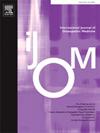Immediate effects of three different upper trapezius trigger point techniques on pain intensity and pressure threshold in students with cervical pain: a randomized clinical trial
IF 1.5
4区 医学
Q2 MEDICINE, GENERAL & INTERNAL
引用次数: 0
Abstract
Objective
To compare the effectiveness of three manual therapy protocols (Jones, Lewit, and Chaitow) with a sham group in terms of pain pressure threshold and intensity.
Participants
Fifty-two physiotherapy bachelor students with neck pain lasting more than 3 days were recruited.
Outcomes: Pain was assessed with Numerical Rating Scale and Pressure Algometer, while cervical range of motion was evaluated with the Baiobit Inertial sensor.
Intervention
An investigator, independent of the assessment and randomization, conducted all the interventions and sham procedures. Specifically, the Jones group received pincer palpation with a 1-min duration of ischemic compression, followed by 90 s of the no-pain Strain-Counterstrain technique. The Lewit group underwent flat palpation for 1 min, accompanied by 40 s of intermittent compression and post-isometric relaxation. The Chaitow group received deep palpation for 1 min, followed by the pressure release position lasting 20 s to 1 min, concluding with the muscle energy technique. The Sham group received only flat palpation and a 3-min homolateral muscle shortening position.
Results
Effects for all three techniques (Chaitow/Lewit/Jones) when comparing them to sham were not significant on pain intensity (−0.96/−1.01/−0.63) or on pressure threshold (−0.5/−0.4/−0.19). No adverse events or undesirable effects were observed during the study.
Conclusion
Immediate effects on pain intensity and pressure threshold are not directly attributable to any of the three tested trigger techniques.
Clinical trial registration number id
NCT05265468.
三种不同的上斜方肌触发点技术对颈椎疼痛学生疼痛强度和压力阈值的直接影响:一项随机临床试验
目的比较三种手法治疗方案(Jones、Lewit和Chaitow)与假手术组在疼痛压力阈值和强度方面的效果。参与者招募了52名颈部疼痛持续3天以上的物理治疗本科学生。结果:用数值评定量表和压力测量仪评估疼痛,用Baiobit惯性传感器评估颈椎活动度。一名独立于评估和随机化的调查员进行了所有的干预和假程序。具体来说,Jones组接受钳触诊,持续1分钟的缺血压迫,随后90秒的无痛应变-反应变技术。lewitt组平触诊1分钟,伴有40秒间歇压迫和等长后放松。Chaitow组深触诊1 min,减压体位持续20 s ~ 1 min,以肌能法结束。假手术组只接受平触诊和3分钟同侧肌肉缩短体位。结果三种技术(Chaitow/Lewit/Jones)与假手术相比,疼痛强度(- 0.96/ - 1.01/ - 0.63)和压力阈值(- 0.5/ - 0.4/ - 0.19)的影响均不显著。在研究期间没有观察到不良事件或不良反应。结论三种触发技术对疼痛强度和压力阈值的直接影响均不能直接归因于任何一种触发技术。临床试验注册号idNCT05265468。
本文章由计算机程序翻译,如有差异,请以英文原文为准。
求助全文
约1分钟内获得全文
求助全文
来源期刊
CiteScore
2.20
自引率
36.80%
发文量
42
审稿时长
3 months
期刊介绍:
The International Journal of Osteopathic Medicine is a peer-reviewed journal that provides for the publication of high quality research articles and review papers that are as broad as the many disciplines that influence and underpin the principles and practice of osteopathic medicine. Particular emphasis is given to basic science research, clinical epidemiology and health social science in relation to osteopathy and neuromusculoskeletal medicine.
The Editorial Board encourages submission of articles based on both quantitative and qualitative research designs. The Editorial Board also aims to provide a forum for discourse and debate on any aspect of osteopathy and neuromusculoskeletal medicine with the aim of critically evaluating existing practices in regard to the diagnosis, treatment and management of patients with neuromusculoskeletal disorders and somatic dysfunction. All manuscripts submitted to the IJOM are subject to a blinded review process. The categories currently available for publication include reports of original research, review papers, commentaries and articles related to clinical practice, including case reports. Further details can be found in the IJOM Instructions for Authors. Manuscripts are accepted for publication with the understanding that no substantial part has been, or will be published elsewhere.

 求助内容:
求助内容: 应助结果提醒方式:
应助结果提醒方式:


